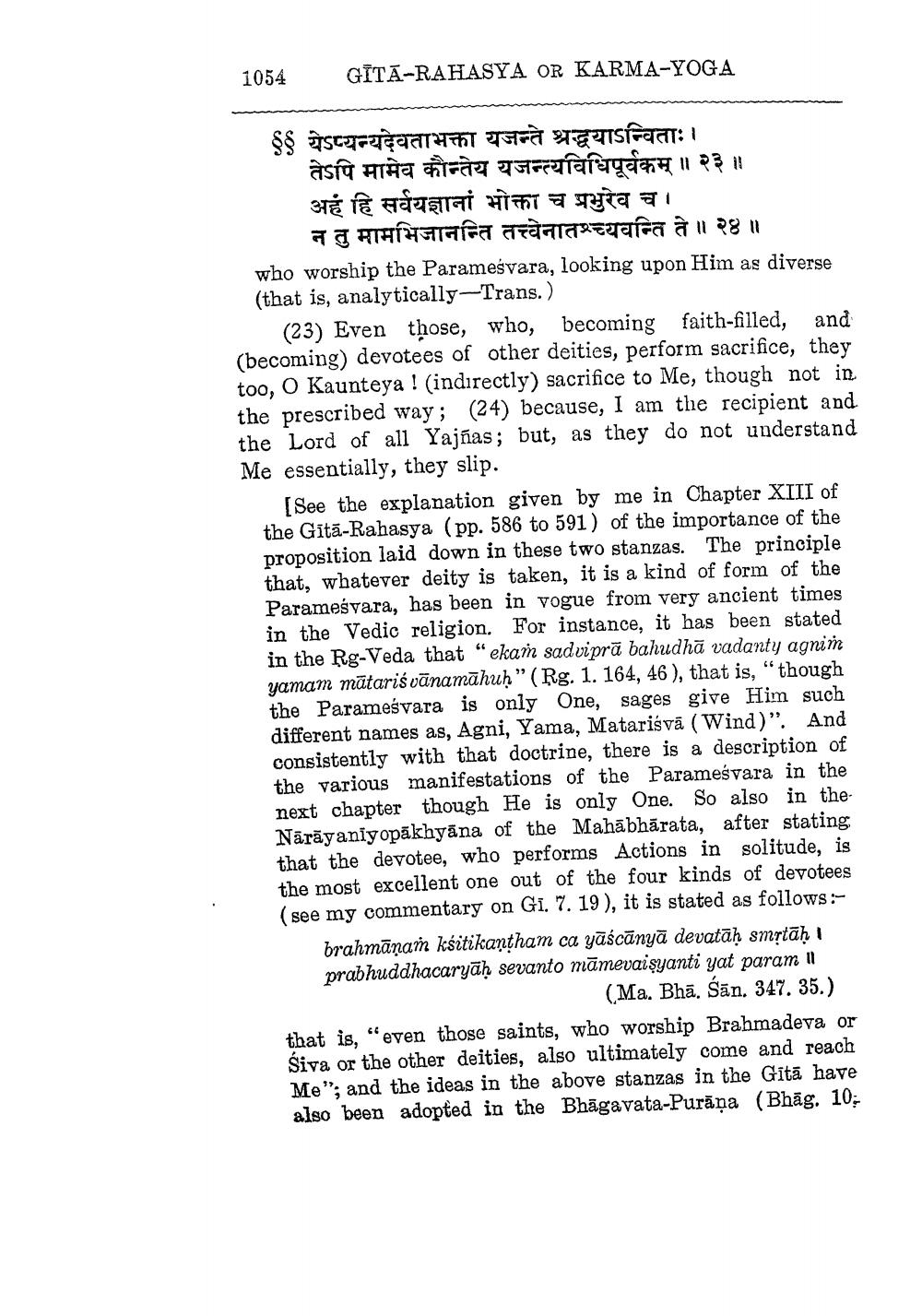________________
1054
GĪTĀ-RAHASYA OR KARMA-YOGA
$येऽप्यन्यदेवताभक्ता यजन्ते श्रद्धयाऽन्विताः।
तेऽपि मामेव कौन्तेय यजन्त्यविधिपूर्वकम् ॥ २३ ॥ अहं हि सर्वयज्ञानां भोक्ता च प्रभुरेव च ।
न तु मामभिजानन्ति तत्त्वेनातश्च्यवन्ति ते ॥ २४ ॥ who worship the Paramešvara, looking upon Him as diverse (that is, analytically-Trans.)
(23) Even those, who, becoming faith-filled, and (becoming) devotees of other deities, perform sacrifice, they too, O Kaunteya ! (indirectly) sacrifice to Me, though not in the prescribed way; (24) because, I am the recipient and the Lord of all Yajñas; but, as they do not understand Me essentially, they slip.
[See the explanation given by me in Chapter XIII of the Gītā-Rahasya (pp. 586 to 591) of the importance of the proposition laid down in these two stanzas. The principle that, whatever deity is taken, it is a kind of form of the Parameśvara, has been in vogue from very ancient times in the Vedic religion. For instance, it has been stated in the Rg-Veda that “ekam sadviprā bahudhā vadanty agnim yamam mātariśvānamāhuḥ” (Rg. 1. 164, 46), that is, "though the Parameśvara is only One, sages give Him such different names as, Agni, Yama, Matariśvā (Wind)". And consistently with that doctrine, there is a description of the various manifestations of the Parameśvara in the next chapter though He is only One. So also in theNārāyaniyopakhyana of the Mahābhārata, after stating that the devotee, who performs Actions in solitude, is the most excellent one out of the four kinds of devotees (see my commentary on Gi. 7. 19), it is stated as follows:
brahmānam kśitikantham ca yāścānyā devatāḥ smrtāḥ 1 prabhuddhacaryāḥ sevanto māmevaişyanti yat param 11
(Ma. Bhā. Sān. 347. 35.) that is, “even those saints, who worship Brahmadeva or Siva or the other deities, also ultimately come and reach Me"; and the ideas in the above stanzas in the Gitā have also been adopted in the Bhagavata-Purāņa (Bhāg. 10;




